
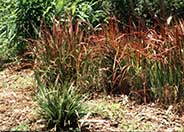
Common name:Japanese Blood Grass
Botanical name:Imperata cylindrica 'Rubra'
This ground cover/grass can reach up to 3' tall and has green leaves that are reddish/maroon at the tips.
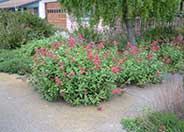
Common name:Jupiter's Beard, Red Valerian
Botanical name:Centranthus ruber
This perennial groundcover will grow 1-3' high and has medium-size blue/green leaves with red, pink, or white flowers that bloom in the summer.
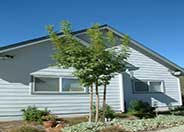
Common name:Chinese Pistache
Botanical name:Pistacia chinensis
The Pistacia chinensis is a deciduous tree with broad, spreading growth to 50' in height. Its leaves have 10-16 leaflets, and the fall coloring arrives in beautiful shades of red, orange and yellow. The young trees are often gawky, but some become shapely with age.
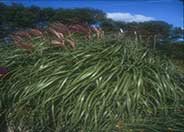
Common name:Eulalia Grass
Botanical name:Miscanthus sinensis 'Flamingo'
These deciduous grasses grow from 4-7' tall, and often turn orange or dark red before going dormant. Tall, showy spikes of feathery, curved seed heads are borne and retained well into the winter or the following spring. It should receive sun to part shade, and average to little summer watering. -Monterey Bay Nursery
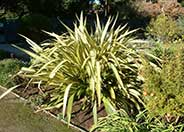
Common name:New Zealand Flax
Botanical name:Phormium 'Wings of Gold'
The Phormium tenax is a large, bold plant with stiffly vertical, sword-like, green, strap-like leaves that arise from its base. It should be grown under full sun.
Mulch improves the health of the soil.
Healthy soil is the cornerstone of a vibrant landscape. It provides oxygen and nutrients vital to plant growth and sustenance. It provides protection from the sun and stability for root systems.
Click in the green box for more information
| Designer: | Flax-Lined Path |
Photographer: GardenSoft |
Maintain a two to four inch layer of mulch on the soil surface to reduce weeds, infiltrate rain water, and reduce compaction.
Mulching and adding compost to soil can minimize evaporation and help soil absorb and store water.
Remove irrigation water and fertilizer from areas where you don't want weeds to grow.